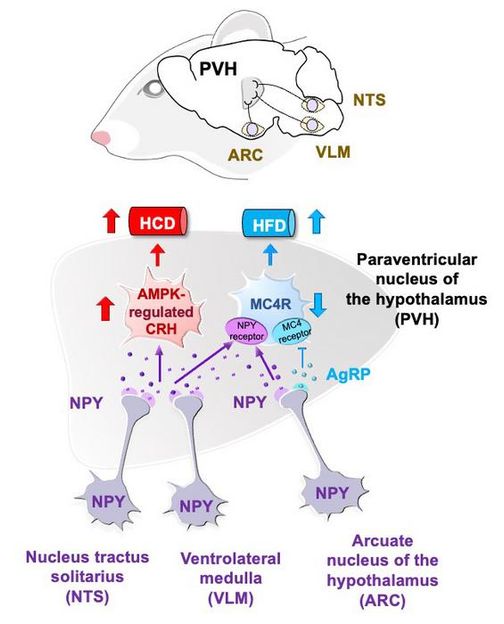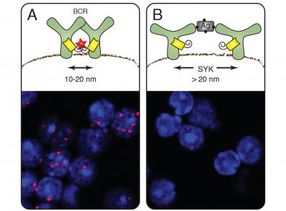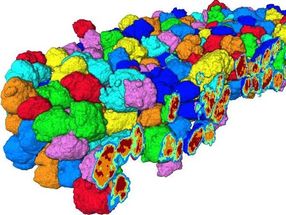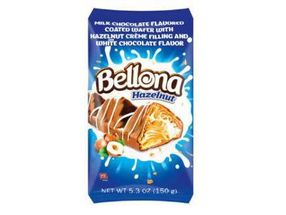Fat or carbs? The neural mechanism underlying food choices revealed
Advertisement
Feeding in mammals is controlled by a complex neural system. Although several key neural pathways related to total calorie intake have been extensively studied, it is still unclear how food choices are regulated and how they influence overall feeding behavior. Food selection among different types, such as an HCD and an HFD, is affected by various internal conditions. For example, mice usually consume only an HFD, but they will eat both an HCD and an HFD when glucoprivation occurs after 2DG administration. However, the neural mechanisms behind this remain unknown. The research team examined the neural mechanisms influencing food choice between an HCD and an HFD in mice after administering 2DG. They found that the consumption of HCD and HFD after 2DG is independently controlled by AMP kinase 3) (AMPK)-regulated corticotropin-releasing hormone (CRH) 4) neurons and melanocortin 4 receptor (MC4R) 5) -expressing neurons in the PVH, respectively. The researchers also discovered that neuropeptide Y (NPY) neurons in the nucleus of the solitary tract (NTS) and ventrolateral medulla (VLM) activate both AMPK-regulated CRH neurons and MC4R neurons in the PVH, promoting HCD and HFD intake following 2DG treatment. Conversely, NPY neurons in the arcuate nucleus of the hypothalamus (ARC) inhibit MC4R neurons in the PVH, resulting in increased HFD intake alone. These findings first demonstrated that HCD and HFD intake are controlled by two separate neural pathways in the brain. This could offer new insights into understanding the neural mechanisms behind food choices among foods with different nutrient compositions.

2DG-induced glucoprivation promotes high-carbohydrate diet (HCD) and high-fat diet (HFD) intakes in the paraventricular nucleus of the hypothalamus (PVH) by activating neuropeptide Y (NPY) neurons in the nucleus of the solitary tract (NTS), ventrolateral medulla (VLM), and the arcuate nucleus of the hypothalamus (ARC). Activation of NPY neurons in the NTS and VLM stimulates AMPK-regulated corticotropin-releasing hormone (CRH) neurons in the PVH, leading to increased HCD intake that helps offset the impaired glucose metabolism caused by 2DG. In contrast, PVH-projecting NPY neurons in the NTS, VLM, and ARC, which also release AgRP (agouti-related peptide), increase HFD intake after 2DG injection by inhibiting PVH melanocortin 4 receptor (MC4R) neurons.
Yasuhiko Minokoshi
Original publication
Yasuhiko Minokoshi, Thierry Alquier, Noboru Furukawa, Young-Bum Kim, Anna Lee, Bingzhong Xue, James Mu, Fabienne Foufelle, Pascal Ferré, Morris J. Birnbaum, Bettina J. Stuck, Barbara B. Kahn; "AMP-kinase regulates food intake by responding to hormonal and nutrient signals in the hypothalamus"; Nature, Volume 428, 2004-3-17
Nawarat Rattanajearakul, Kunio Kondoh, Ou Fu, Shiki Okamoto, Kenta Kobayashi, Ken-ichiro Nakajima, Yasuhiko Minokoshi; "Glucoprivation-induced nutrient preference relies on distinct NPY neurons that project to the paraventricular nucleus of the hypothalamus"; Metabolism




















































